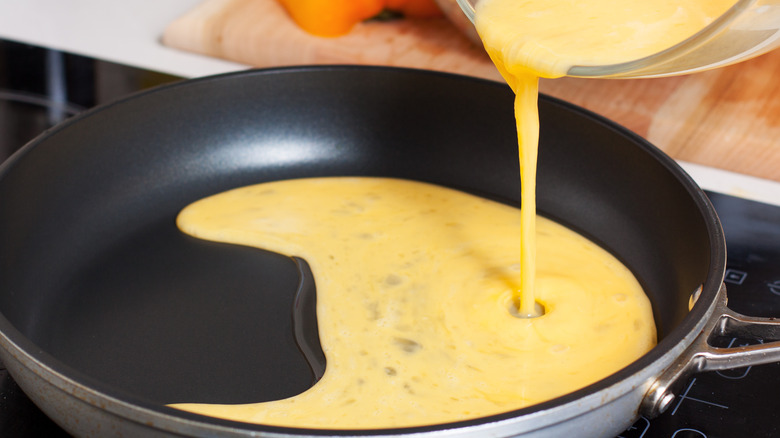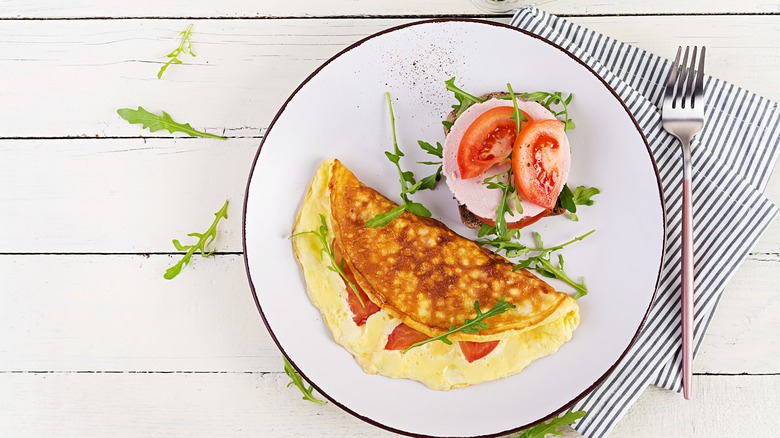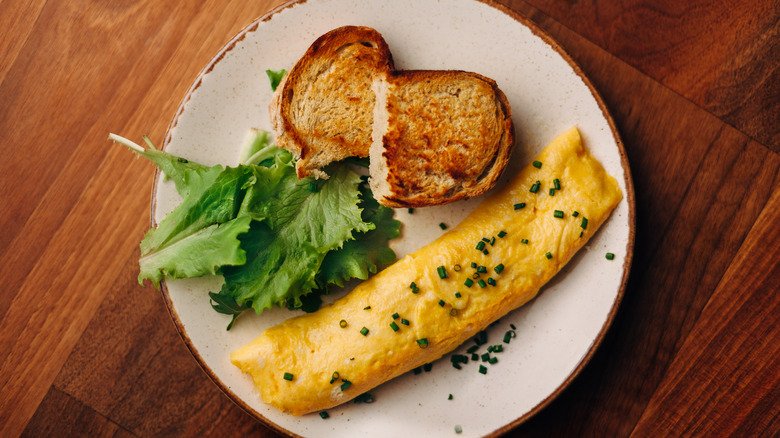The Difference Between American And French Omelettes
When you order an omelette in a restaurant, there are some choices to be made. Will it be Denver or Western? Bacon or ham? Cheddar or Swiss? American or French? Okay, so that last choice is pretty uncommon in an American restaurant, but they are two very different types of omelettes and the difference has less to do with the particular fillings used and more to do with the preparation styles.
The deceptively simple egg dish is enjoyed commonly in both America and France, but while it's mainly had for breakfast or brunch in the U.S., the French regard omelettes as a suitable lunch or dinner as well. When prepared using the same ingredients, both omelette styles will essentially taste the same, and the only difference would be their appearance. The operative difference between the two is that American omelettes nearly always include various ingredients beyond eggs, and the desired texture for a French omelette requires a bit more technical skill.
What is an American omelette?
An American-style omelette can best be described as a flat circle of cooked scrambled eggs that has been filled with an array of proteins, vegetables, and cheeses and is folded over in a half-moon shape before being eaten. The fillings are endless; a simple omelette might only be filled with cheese, a fancy one may be stuffed with crabmeat and avocado, and a practical one may be filled with last night's leftover potatoes and sautéed bell peppers.
Many restaurants let diners create their own omelette so, really, the possibilities are endless. In a way, the egg in an American omelette is simply the vehicle for holding the other ingredients. To make an American omelette, beaten eggs are poured into a pan that has been preheated with melted butter. As the eggs cook, the solid edges are lifted to allow the liquid portion to come into contact with the heat. While some simply mix all the ingredients into the beaten eggs, others add the additional ingredients to the eggs in the small window where the egg has a firm bottom crust and a soft top before folding in half.
What is a French omelette?
A classic French omelette has no fillings at all. That's right, it's just eggs and butter cooked in a way that results in a pillowy, soft texture. As simple as it is, it takes a lot of skill to get right. One of the most popular versions of a French omelette is called a Fines Herbes omelette and includes various soft herbs that are chopped and incorporated into the scrambled egg mixture. While it's become more common today to see French omelettes with fillings like cheese or vegetables, they are rarely stuffed to the brim like American omelettes.
One way you'll immediately know you're looking at a French omelette is its shape. Rather than being folded in half, French omelettes are rolled into an oval or cylindrical shape when served. Like American omelettes, French omelettes begin by pouring beaten eggs into a butter-coated pan. Rather than lift the edges, the pan is shaken so the egg is constantly moving, and the eggs end up fluffy when done. Whether filled or not, when the eggs are set, the omelette is rolled and plated seam-side down. Like many French dishes, the omelette is meant to be simple yet elegant, perfect for serving with a salad and a glass of wine.


